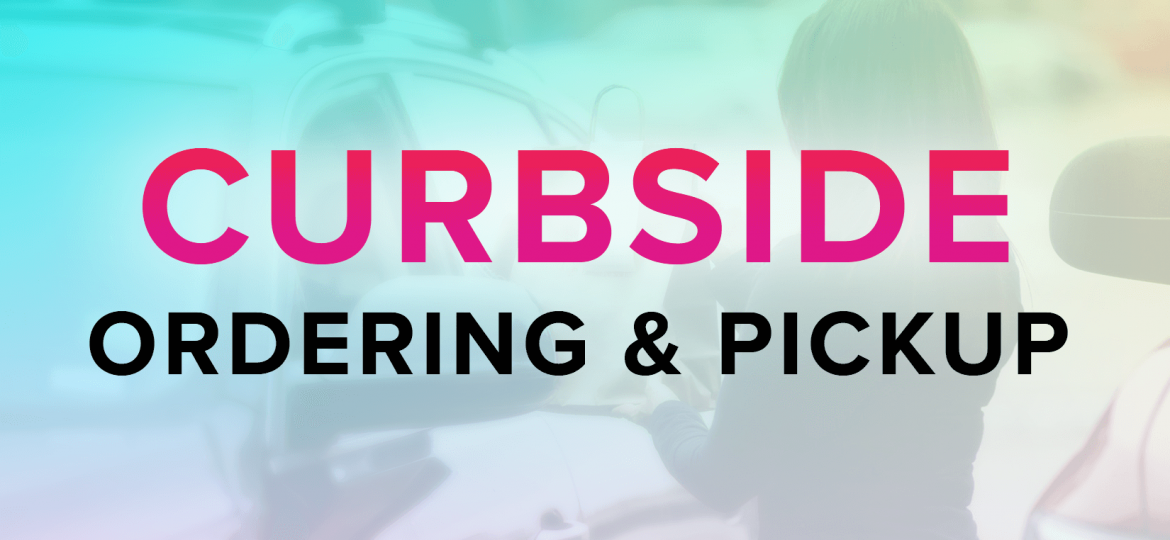
If you haven’t offered it yet, here’s why you should:
While many restaurants and retailers are struggling to stay open as much of the world waits behind closed doors during the COVID-19 lockdown, increasing numbers of business owners are adopting a new way of making their services accessible: contactless curbside delivery.
What is curbside?
The curbside pickup option, a concept that was created to improve customer experience, convenience and speed, has changed dramatically in recent months as the need for this business model is keeping many businesses operational, while providing a safe environment for employees and customers.
Curbside ordering, pickup and delivery is a safe and hygienic way for your customers to buy food and products during the Coronavirus pandemic. It allows customers to drive to their favorite restaurants and local stores and pick up their orders without ever getting out of the car. While small and medium businesses keep their staff safe (and employed) with curbside pickup options, they also succeed in meeting their customers’ demands. Customers can safely pick up their favorite items while they keep their distance from the employees and 3rd party delivery services.
Curbside ordering has not always been a popular option, but now it’s gaining momentum. It’s not only a much more valuable alternative to customers who are affected by the Coronavirus crisis, but it’s also an increasingly important option for restaurateurs and retailers to keep their business operational. KIBO’s Consumer Trends Report found that 67% of the 3,000 survey respondents used the curbside pickup in the past six months. Also, according to the National Restaurant Association’s Restaurant Industry Forecast, 46 percent of all customers – and more than half of frequent off-premises dinner customers and frequent quick-service customers –say they would use curbside options at table-service restaurants.
How does it work?
The concept is very simple:
- The Customer can order online, selecting the “Curbside Pickup/Delivery” option or via LINGA Call Center to place their order.
- The Customer provides the make, model and color of their car so that the server knows what car to bring the order to when the Customer arrives.
- Orders are paid online, on the phone or with a contactless payment option.
- Employees prepare the order.
- The Customer receives an email, SMS or a call when their order is ready.
- When customers park and parks in the designated area, they let you know that they have arrived by clicking the link LINGA sent them.
- The kitchen gets the notification.
- After verifying the order and customer, the staff brings the order directly to their car.
Benefits of curbside pickup
- First and most importantly, you can stay open and keep serving your customers.
- The curbside ordering concept is a safe alternative that doesn’t require your customers to leave their cars.
- By limiting the amount of person-to-person contact, you can easily protect your employees.
- While you keep your revenue coming in, you can also avoid overspending in these uncertain times by using up your existing inventory.
- Driving to a restaurant may be the fastest option to buy food for your customers. With the curbside ordering feature, your customers can select a delivery time slot and pick up their orders easily on their time.
- And best of all, you don’t have to pay for delivery costs anymore!
With LINGA, curbside functionality has never been this easier!
If you’re considering starting a curbside service, “LINGA online ordering and curbside pickup integration” is the best solution and it offers everything you need to run your business smoothly. While you can easily accept orders from online customers looking for delivery options nearby with a fast, easy, and powerful ordering platform, you can provide contactless delivery with curbside pickup and reduce the risk of Covid-19 transmission all while still make your customers SMILE.
The goal is reached. With no contact, no risk, all is easy and fast!


